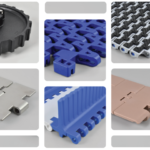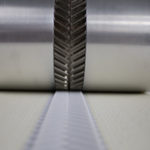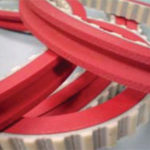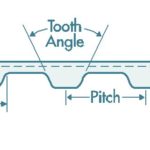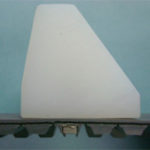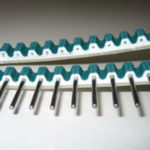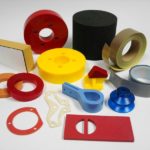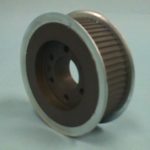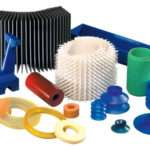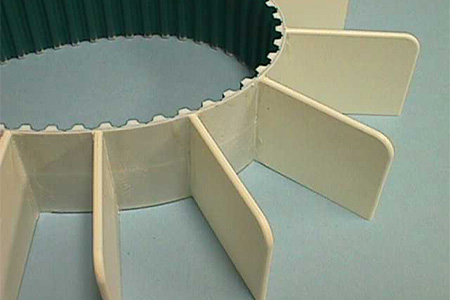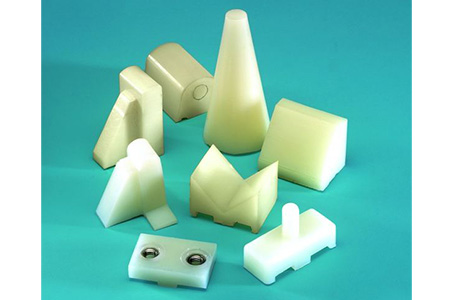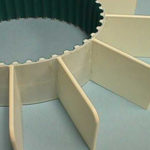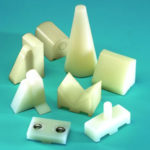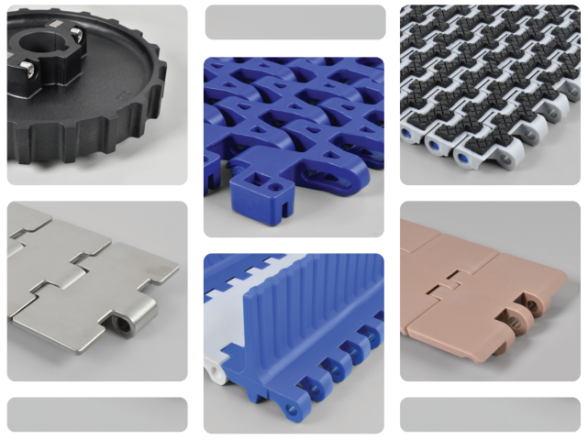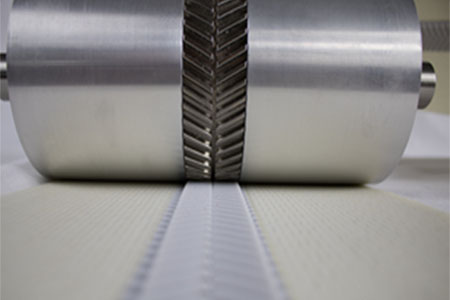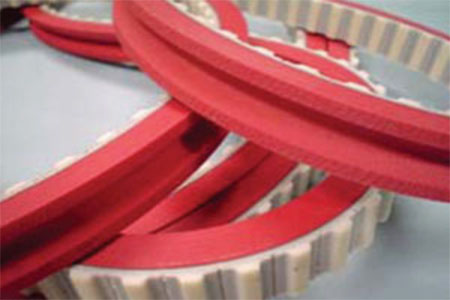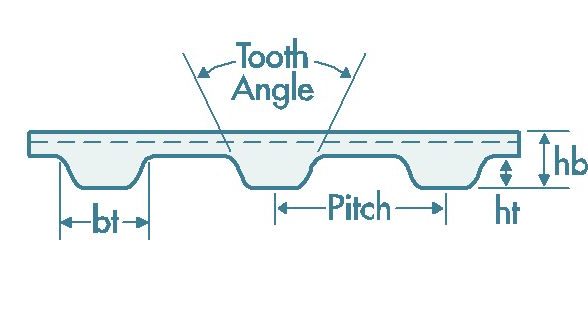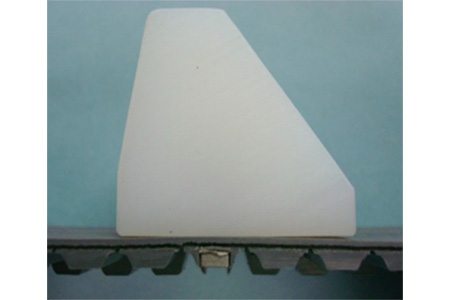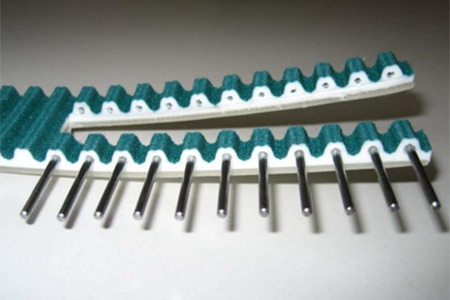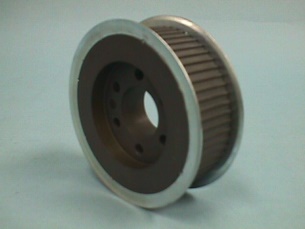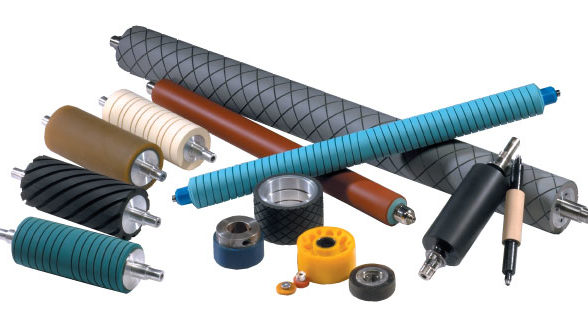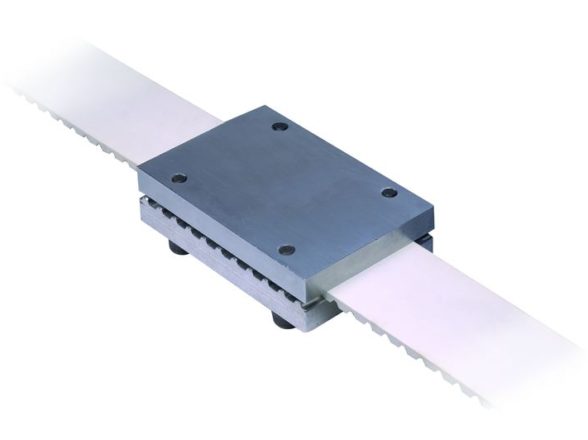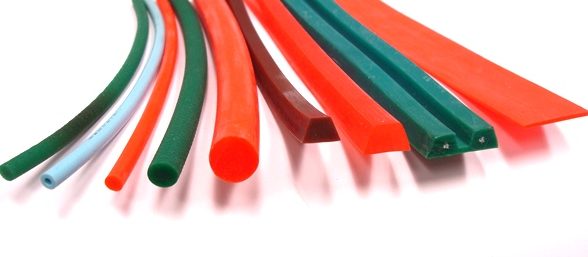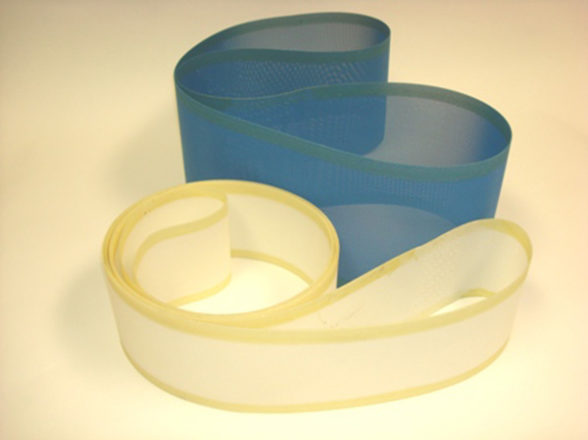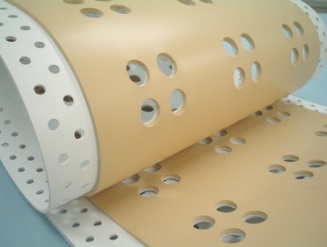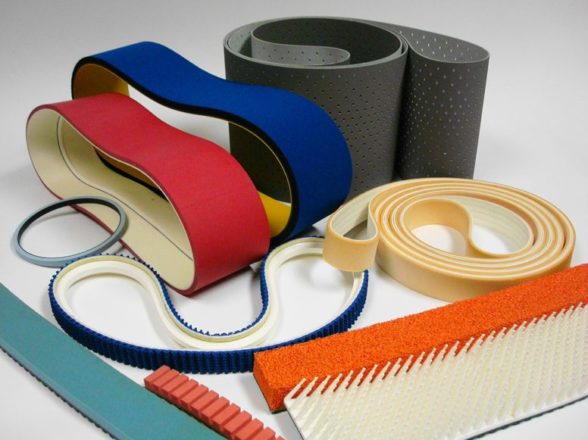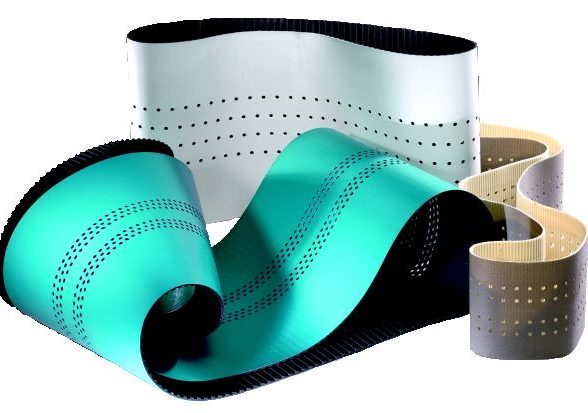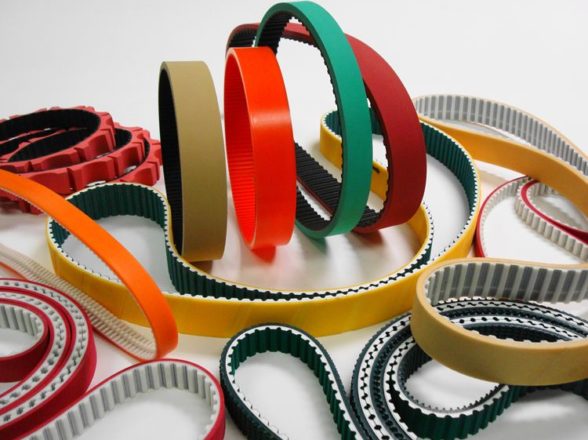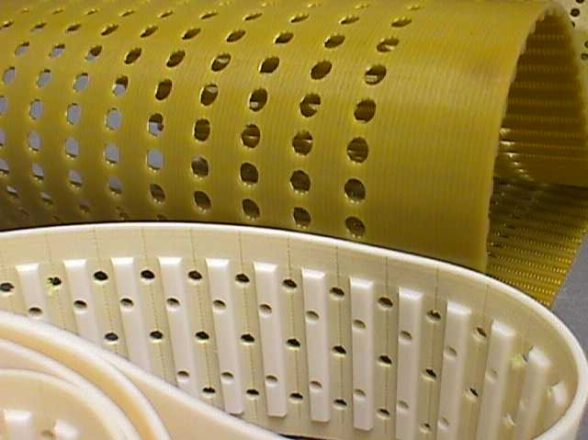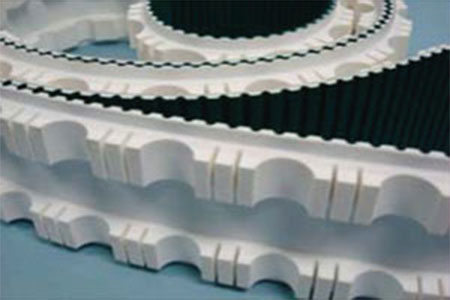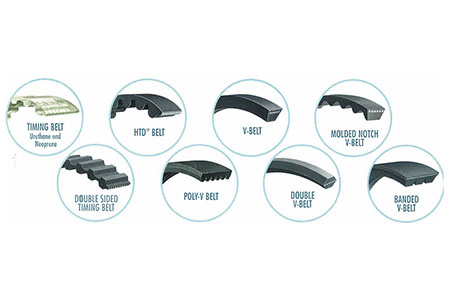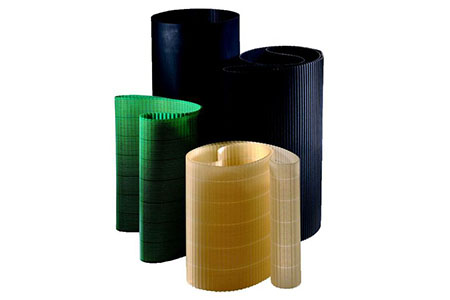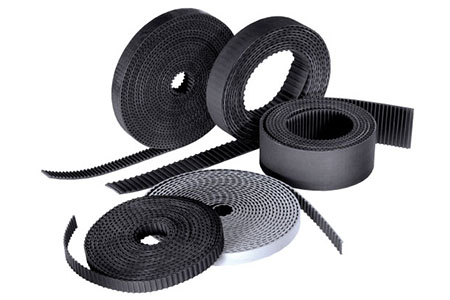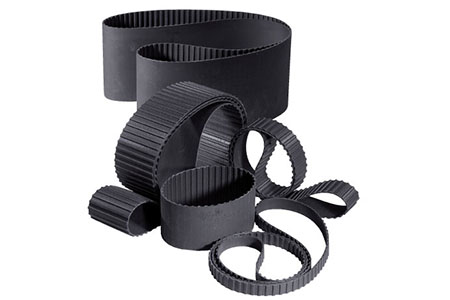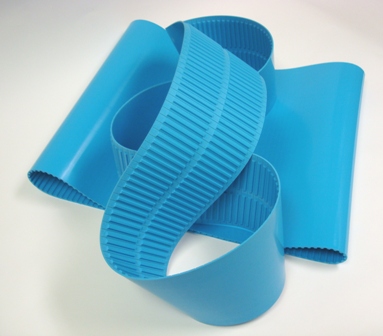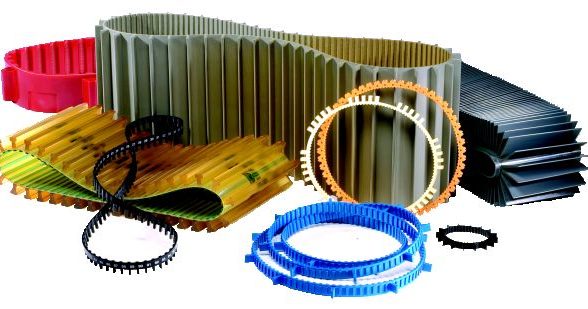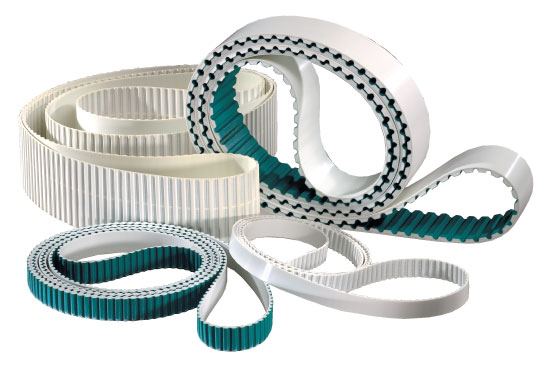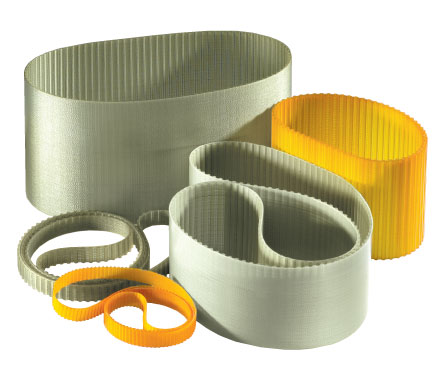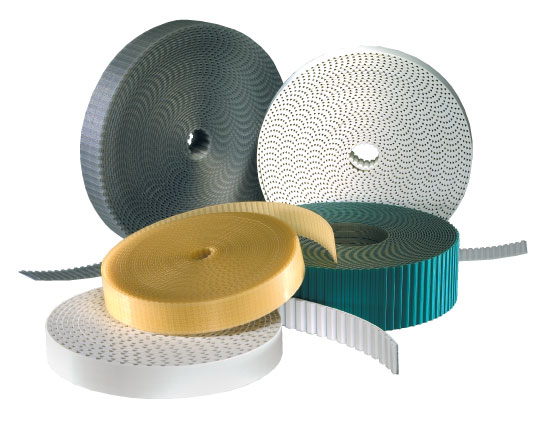Globax portfolio
Profiled/Cleated Belts; Profile Selector Guide
Details
- Category: Profile Belts, Timing Belts
- Referred to as...Profiles, Cleats, Lugs, Pockets
- Raised transverse sections on the outer surface
- Wide selection of designs are available
- Profiles can be molded, thermally-welded, machined, bonded
Description
Timing Belts can provide exceptionally accurate synchronized conveying of products. Ideal for assembly, packaging, inserting and other automation applications. Timing belts are available in any length and can be specified in one tooth increments.
F. N. Sheppard timing belts have been used extensively as reliable profiled timing belts. The requirements in automation and material handling are diverse. Often, the designer is challenged to come up with innovative concepts to solve differing requirements depending on the product to be conveyed and function to be solved.
We offer an extensive line of synchronous belts and a wide selection of stock profiles. It allows for innovative design solutions for dividing, stepping and positioning.
When you are confronted with a drive or conveying problem, just call on us. A quick phone call can allow us to assist you in finding the desired solution or we can provide you with our suggestions.
Profiles are commonly referred to as lugs, cleats, pockets and attachments. Profiles are transverse raised sections on the outer surface of a belt used to hold, stabilize, position or transport a product. Profiles are available in many compounds and are applied in various ways. Various ways include molding, thermal-welding, bonding and machining. Hundreds of profile designs are available from F. N. Sheppard’s mold inventory. Our Applications Engineers can work with you to design any profile to meet your specific requirements. Tooling charges are minimal for most new customized designs. Drawings of some of the profiles are shown in this catalog. Profiles allow for precise indexing with accurate placement on synchronous base belts. This synchronization is not attainable with flat belts.
| Profile Spacing Tolerance |
Profile Spacing Range:0.2″ = A <36.0" and 5mm = A <914.4 mm Over Tooth Non-Cumulative Range: ±0.015″ – ±0.035″ and ±0.038 mm – ±0.9 mm Not Over Tooth Range: ±0.020″ – ±0.040″ and ±0.5 mm – ±1.0 mm |
| Wide Base Profiles | Some applications require profiles that are tall with a wide base or need to maintain rigidity. An unwelded gusset, foot or feet would allow for flexing around a pulley yet remain rigid when loaded or in the linear position. |
| Profiles with Inserts | Male and Female metallic inserts can be molded into the profiles. The actual inserts can be manufactured by F. N. Sheppard or supplied by the customer |
| Profiles with Holes | Holes or slots can be molded, perforated or drilled into the profile. Holes are typically used as a means for securing other attachments. Metal or plastic style bushings may be incorporated into the hole to provide strong support. Contact our Technical Department for hole tolerances. |
| Profile Flashing | Depending on the process used to incorporate profiles, there may or may not be any flashing at the foot of the profile. Contact our Technical Department for details. |
For spacing greater than 36.0″ add 0.006″ per ft.
For spacing greater than 914.4mm, add 0.15mm per 305mm.
Tighter tolerances on profile spacing are available. Please contact an F. N. Sheppard Applications Engineer for more information.
| Spacing of Profiles | It is recommended but not necessary that the profile spacing (A) correspond with the pitchof the belt teeth. This allows for the best spacing tolerancesand minimizes the effects of the belt’s overall length tolerance on the profile spacing. Profiles can be spaced on other than pitch increments. However, if non-pitch spacing is used, the cumulative tolerance of the belt length must be considered. | |
| Position and Thickness of Profiles |
The most important consideration while dimensioning a profile is the size of the base of the profile, (the “foot” of the profile), and the position of the profile on the belt. The profile thickness can affect the flexibility of the belt and can determine the minimum allowable pulley diameter. The flexibility of the belt can be maximized, however, by positioning the profile directly over the tooth of the belt. As the thickness of the foot of the profile increases, the minimum pulley diameter must be increased according to the table. |
|
 |
Urethane Welded Profile | The strength of the profile is affected by the type and direction of the force applied to it. Under high loads, the failure mode will normally be either bending and distortion of the profile and belt, or in some cases, the urethane may actually tear. With a load introduced against the profile at a point 1/4″ above the belt surface, the strength of the profile is 2,500 lbs. per square inch of welded foot area, or 1724 N/cm2. Our Technical Department would like to assist you with determination of profile strength. |
| Profile Strength | There are many variables to consider when figuring the strength of the profile. Variables include method of attachment, compound of profile, belt construction, type of force, and direction of force. F. N. Sheppard has the largest selection of belts and profiles available and many methods of attaching profiles. Your application and other variables are the major factor for considering what method of attachment to use. | |

|
Number of Pulley Teeth (Over A Tooth) |
Profile ‘Foot’ Range: 1/16” – ¾” and 1.60 mm – 19.00 mm Pitch Range: 10 – 200 |

|
Number of Pulley Teeth (Not Over A Tooth) |
Profile ‘Foot’ Range: 1/16” – ¾” and 1.60 mm – 19.00 mm Pitch Range: 10 – 200 |
- PHONE: 1-866-672-6339
- EMAIL: beltinfo@fnsheppard.com
Wish to speak with someone right away? Simply call and speak to one of our knowledgeable F.N. Sheppard experts. They will be able to begin engineering a belt that suits your needs quickly and professionally.
